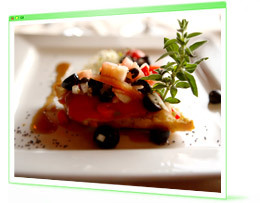My UPD8
Login to download activities, post reviews and discuss breaking science. To sign up click on join UPD8 below.
New, revised! What's cooking

Type: Activity
Learning Strategy: Imaginative inquiry
Topic: Energy transfer
This activity is a sample from version 2 of the Cook unit, part of the upd8 wikid course. Find out more about the course
Introduction to the Cook unit
The bustle of life in a high-class restaurant is exciting, with the inflated egos of the head chef and the frantic deadlines to put exciting and interesting food on the plates of customers. But there is a lot of science knowledge and understanding needed to keep this creative and crafted enterprise running smoothly. A chef is like a chemist in a laboratory. Both use experiment, and have similar tools to mix, measure, heat, and dissolve. Chefs also need to build up mental models of how chemical reactions and physical change work, so they can create exciting recipes.
The modern gastronomic ‘kitchen laboratory’, like that of our Gastro Heaven restaurant, helps the development of the right knowledge in its trainees. Students take the role of Ally the trainee chef and are alternately challenged by Gordo the head chef, and tutored by Jimella the knowledgeable gastro scientist. Finally Ally [the students] represent Gastro Heaven on a TV show called ‘Inside Story’ that challenges competitors to use modelling techniques to explain phenomena.
Download the Cook unit guide to see the How Science Works and content coverage
About this activity
This sequence is about energy transfers that cause heating. Students use their common everyday experiences to think about and investigate how food gets heated in a variety of different ways when being cooked. They form a constructivist concept that links common phenomena in energy transfers. Then students learn the details, vocabulary and models for energy being transferred during cooking by conduction, convection and radiation.
Students also learn that temperature is a property of a substance relating to particle movement, whereas heating is about a transfer of energy
Snarly restaurant boss Gordo has taken on a new trainee chef called Ally. Gordo is unimpressed by all his trainees, including this one – he feels they know nothing. Luckily there is a helpful gastronomic scientist chef, Jimella, working in the “gastro lab” attached to the restaurant.
Download the PowerPoint presentation to see the sample activity
11-14 How Science Works:
This unit focusses on the skill of 'using scientific models': Strategy 3.1.8.1 APP AF 1.
Apply and use the particle model to describe a range of physical observations
Published: 3rd June 2008
Reviews & Comments: 0
Learning objectives
- Energy is transferred during cooking by conduction, convection and radiation.
- Temperature is a property of a substance relating to particle movement, whereas heating is about a transfer of energy
Try the activity
- PowerPoint Lesson Presentation
Downloaded: 288 times - Detailed lesson plan
Downloaded: 174 times - Cook unit guide
Downloaded: 152 times
You will need Acrobat Reader installed to open the activity sheets.
Curriculum link
Use a simple model of energy transfer to describe common observations e.g. how heating transfers energy by conduction, convection and radiation. (Strategy Framework 4.2)Running the activity
Download the lesson plan for full details.
Reviews & Comments
Write your online review to share your feedback and classroom tips with other teachers. How well does it work, how engaging is it, how did you use it, and how could it be improved?

Related Activities
Physics / Energy transfer
Difficult & Dull / Particles
- New, revised! 'Fake'
- Cyclone
- Can Science catch a bomber?
- Rough Science 1: Find water
- Making Rain
- Plane as big as a school
Hot Topics / Celebrity
QCA / 7G Particle model of solids, liquids & gases
QCA / 8I Heating & cooling
- Rough Science 3: Spacesuit challenge
- What's moving on Titan
- Formula One stays cool
- Snow Blanket
- Turkey
- Faster Freezing